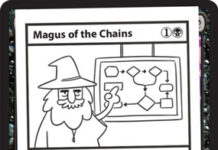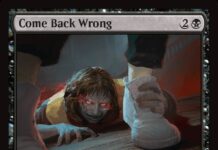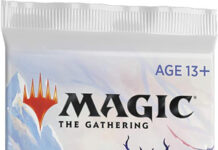Here’s a question that might be trickier than it looks: why is Adventures in the Forgotten Realms part of Standard, when most of Magic’s crossover cards (including Universes Beyond as a universal rule) are not?
Superficially, Forgotten Realms should be in the same position as those other cards. But scratch the surface, and the question becomes a lot more complex. You can make a convincing argument that it’s technically not Magic’s first overlap with Dungeons and Dragons. Have you heard the story of where the characters in Legends actually come from?
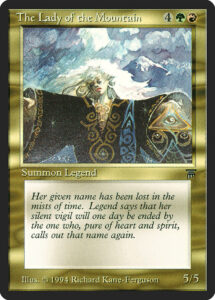
Many of them – and, for that matter, some of the other cards too – are named after characters from the designers’ old Dungeons and Dragons campaigns. That doesn’t entirely explain some of the design choices, like why the Lady of the Mountain was a borderline deity-level character in their campaign and a vanilla 5/5 in Legends, but it does explain why you can feel the love for them shine through in the art and flavor text. It’s also worth remembering that Legends is where we first met Nicol Bolas, mover and shaker of events like the Mending and the center of a storyline that affected every set between Shards of Alara and War of the Spark. Does this give him a tenuous connection to D&D?
Of course, card names come from all sorts of odd places, so that might not be entirely telling in itself. It may be more significant that Alpha’s art concepts and style explicitly mimic that seen in 80s and 90s Dungeons and Dragons manuals. Because of the nature of Magic’s lore, and the focus on planeswalkers, there’s a little bit more in the way of spellcaster accoutrements and a little less in the way of weapons and armor. But many of Alpha’s illustrations, and those from other early sets, could easily be adapted for a Mystara sourcebook (and vice versa).
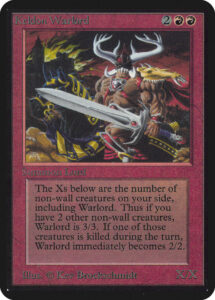
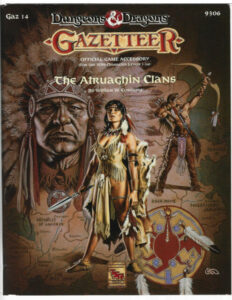
This close connection has come all the way down the decades to our recent sets. There’s a good reason why many Magic artists also work on Dungeons and Dragons (and other fantasy properties, for that matter). They all come from the same wellspring originally, and their underlying concepts and assumptions are still very similar. If you’re interested in the western style of fantasy – its taverns and adventuring parties, fighters and wizards, dungeons and dragons, wisecracks and tragedies, journeys and cataclysms – all roads come, one way or another, through Gary Gygax’s creation.
But of course, they’ve never been identical either. There’s a multiverse in Dungeons and Dragons’ default lore, but it operates in a very different way to Magic’s infinite planes. The concepts of the Blind Eternities and the Spark probably aren’t 100% unique, but they were developed for Magic’s lore and don’t really have good equivalents in D&D. And, of course, the premises of the games are entirely different. Dungeons and Dragons is partly- to completely-freeform collaborative storytelling, where the events are determined by what you and your friends want to do; Magic is about probabilities and ratios and the exact words written on the cards. How does Adventures in the Forgotten Realms stand up next to other Magic sets?
I’m undoubtedly biased, having been a huge Baldur’s Gate mark for over twenty years. But I think it holds up pretty well, and I further think that’s mostly because Magic and D&D share so much common ancestry. They’re more like different branches of the same tree, rather than a piece of one grafted into another. This close relationship means that many of the concepts and characters from the Realms fit naturally into Magic. If you were only familiar with Magic, and didn’t know what world or property Drizzt comes from, you might easily assume that he’s a planar variation of the type we’ve seen a dozen times. When compared to core set elves, he’s hardly more outlandish than, say, Lorwyn‘s. That same diversity – and our deeply-trained expectation of diversity – actually helps many of the cards work remarkably well. And this works even on things with strong previous associations. For example, mind flayers and xorns are considered iconic in D&D because that’s where they first appeared, but their look and concept are perfectly acceptable in Magic; you could easily imagine an alternate universe where they crossed over the other way.
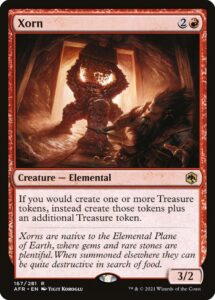
Adventures in the Forgotten Realms, then, is very comfortable for Magic players, and once it’s been around for a while and the initial shock of the crossover has worn off, I suspect that a lot of its cards will blend seamlessly into Magic decks as though the properties had always been united. But of course, there’s another big question on many people’s minds. Universes Beyond sets are on the horizon, some of which will cross over with very different types of properties. Are they going to be as comfortable?
This question is extremely personal, as everyone’s tastes are different, and I would also suggest that we might want to approach it with a relatively open mind. Purism is, to put it bluntly, not always much fun – and as we’ve seen, it’s not always clear where to draw the line. You can end up like Brok, the dwarf against whom Loki once bet his head, not knowing where to make the cut and ending up dissatisfied all around.
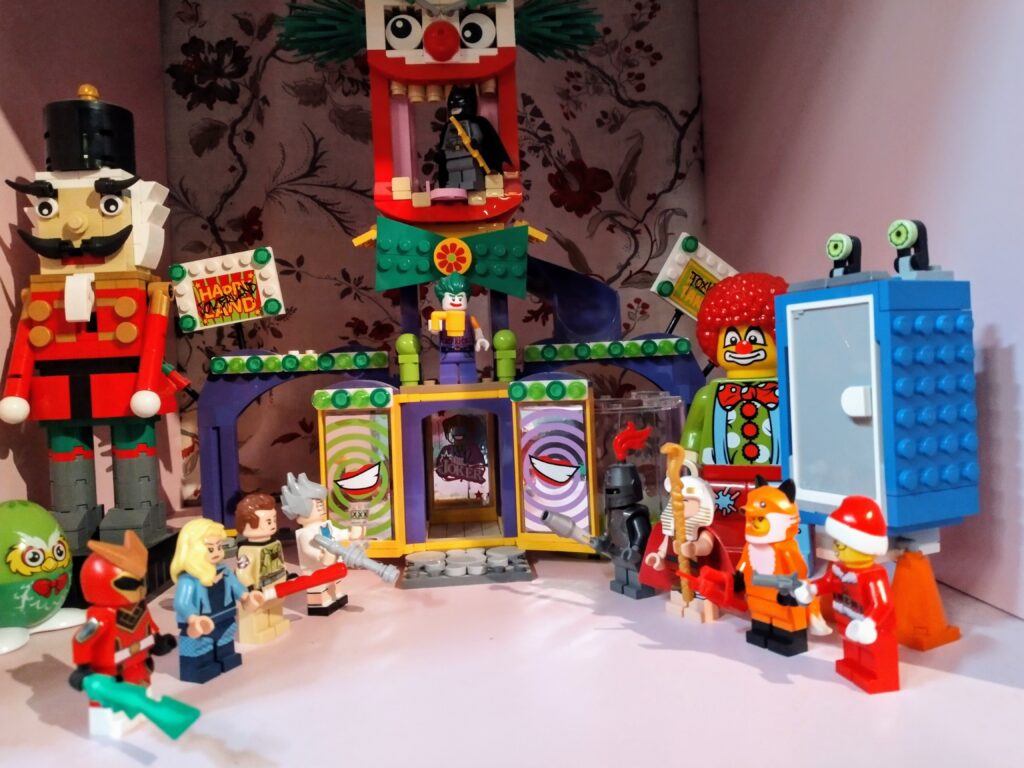
But although Adventures in the Forgotten Realms give us a clue as to what makes a good crossover, we’ll need more content to really decide. And ironically, it’ll be another non-Universes Beyond set that gives us one of the better hints. Unstable was previously the closest Magic’s come to true science fiction, but now that Kamigawa: Neon Dynasty has been confirmed, we’ll soon have a better idea of whether Magic can really do that genre.
As I said, your mileage may vary; I won’t hold any conclusion you reach against you. But it’s certainly an interesting time for Magic. If this were a Dungeons and Dragons campaign, we’d be on the verge of a massive expansion of the scope and a major plot twist. We will learn more about what Magic really is in the next year or so than we have in the past decade.

